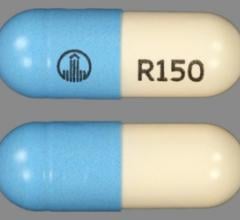![Comparison showing platelet adhesion to the surface of various coronary artery drug-eluting stents (DES) in a preclinical study that used aspirin only. Abbott said the Xience stent's fluoropolymer is significantly more anti-thrombotic than other DES.[2]](/sites/default/files/styles/content_feed_large_new/public/DES_Comparison_thrombus_formation_Stents_Abbott.jpg?itok=fAs21oNf)
Comparison showing platelet adhesion to the surface of various coronary artery drug-eluting stents (DES) in a preclinical study that used aspirin only. Abbott said the Xience stent's fluoropolymer is significantly more anti-thrombotic than other DES.[2]
April 6, 2021 — Abbott today announced its Xience stent has received CE mark in Europe for shorter duration of dual anti-platelet therapy (DAPT) for patients with high bleeding risk (HBR). DAPT can be as short as 28 days, the shortest indication available in the world.
The approval follows recent results from two studies that demonstrated both one-month or three-month DAPT followed by aspirin monotherapy is safe in HBR patients and is intended to improve patient outcomes and provide physicians more options to treat their patients. Xience is the most widely used stent worldwide and is the only stent to have evidence and data for both one-month and three-months DAPT followed by two different types of blood-thinning medication in HBR patients.
Patients who receive stents are typically on DAPT regimens (aspirin and antiplatelet drugs known as P2Y12 inhibitors to prevent blood clots) for six to 12 months to support vessel healing and prevent clotting from blocking the stented vessel. However, HBR patients can experience side effects such as bleeding during prolonged courses of DAPT. Abbott’s XIENCE 28 and XIENCE 90[1] studies show that DAPT can be safely discontinued early with no increased risk in patient adverse events, further confirming the industry leading safety profile of the Xience stent.
"The results of the studies examining the Xience stent in high bleeding risk patients with shorter durations of dual anti-platelet therapy were highly consistent – with no increase in cardiac events and significant reduction in severe bleeding. To see such consistency is important for physicians seeking the best possible outcome for our patients," said Marco Valgimigli, M.D., Ph.D., deputy chief of CardioCentro Ticino, Lugano, Switzerland and professor of cardiology at the University of the Italian Switzerland (USI).
The XIENCE 28 and XIENCE 90 clinical trials enrolled more than 3,600 participants from Europe, the Americas and Asia. The studies monitored two different DAPT durations – one-month and three-months – in exclusively HBR patients. The results are consistent and conclusive: patients who receive the Xience stent with shorter DAPT durations do not have an increase in cardiac events and showed a reduction in severe bleeding, proving short DAPT strategies with the Xience stent are safe in HBR patients.
"In patients with high bleeding risk, the Xience stent has proven that it can ensure patient safety without compromising efficacy when duration of blood-thinning medications is shortened," said Nick West, M.D., chief medical officer and divisional vice president of global medical affairs at Abbott’s vascular business. "These findings build on the unrivalled volume of research confirming the Xience stent’s leading performance across a range of patient and clinical situations."
For years, the global interventional cardiology community has focused on research and innovation to support shorter DAPT treatments for patients requiring stents but who may be at a higher risk of bleeding. Abbott has conducted the clinical research needed to evaluate the safety of the Xience stent in patients using a shorter DAPT duration. These investments in clinical research have built a body of evidence that has impacted what has long been the standard of care for patients after coronary stenting. The Xience stent is used in life-saving treatments that can help prevent or treat heart attacks and has now consistently been proven safe with short DAPT strategies for HBR patients. Abbott is also seeking an indication for HBR for the Xience stent in the U.S.
References:


 August 28, 2023
August 28, 2023 








